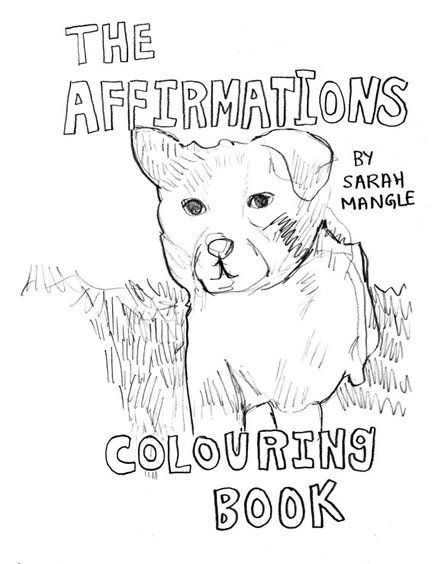Drawing Mindfulness: Colouring Books and Mental Health
- Joy

- Aug 13, 2018
- 2 min read
Updated: Aug 20, 2018
A story I wrote in 2016 for Sick Not Weak, an organization dedicated to de-stigmatizing mental health. You can find the original article here. Sarah Mangle's amazing Etsy shop is here, and her Instagram is here.

Adult colouring books are everywhere. Go to Chapter's and you'll find them; featuring giant swear words covered in flowers, enchanted forests or dream-like cities. According to a 2016 Washington Post article, an estimated 12 million adult colouring books were sold in the United States in 2015 alone. These books can act as basic stress relievers for anyone, but they're making an especially important difference in the lives of people dealing with poor mental health.
Colouring as a form of mindfulness is not a new phenomenon. At a Zine festival in Ottawa, I met colouring book creator Sarah Mangle. She is an artist, life drawing model, daycare teacher, workshop facilitator, advice columnist, and copy editor living in Montreal who teaches art lessons.
"Adult colouring books have actually been around for decades," she says, "the original ones that were the most popular were the Mandala books."
Colouring books can be traced back to Tibetan Buddhist Monks who created Mandalas; beautiful, intricate designs made out of coloured sand, as a form of meditation. Colouring books are a similar form of mindfulness and meditation.
Mangle attributes the recent boom in adult colouring books to market creation. "Big publishers saw the potential for a new market and invested a lot in it," she says.
Mangle's first colouring book, "The Affirmations Colouring Book," features portraits of a variety of animals accompanied by comic-book style speech bubbles filled with comforting affirmations. Mangle chose affirmations because they are "ways to hope when you don't have any," she says.
Through her art, Mangle says she tries to "bring comfort and joy to people's lives." She says art is essential to mental health.
"Tactile things, sensory things, connect us to our bodies and our breath. Remind us we have bodies. Bring us to the present moment. In that way, art making can help soothe, help bring us back into our bodies."
Colouring books have physical effects on our bodies. Colouring has been shown to cause a similar brain state to meditation. It is a way to switch off the brain and replace negative imagery and thoughts with positive ones. Our heart rate and respiration slows down, our muscles loosen, and our brain is stimulated. Colouring reduces anxiety and can even improve sleep or be a boost to fine motor skills.
These books aren't just showing up in individual homes. Sarah's colouring books and others like them are being used in unexpected places. "People are using them as peer support in groups in prisons, schools, shelters, therapy waiting rooms, hair salons and lawyer's offices," Mangle says.
So, whether you're adding colour to a large-font curse word or colouring in a fairy's wings, spending just a few minutes colouring is a great way to practice self-care.




Comments